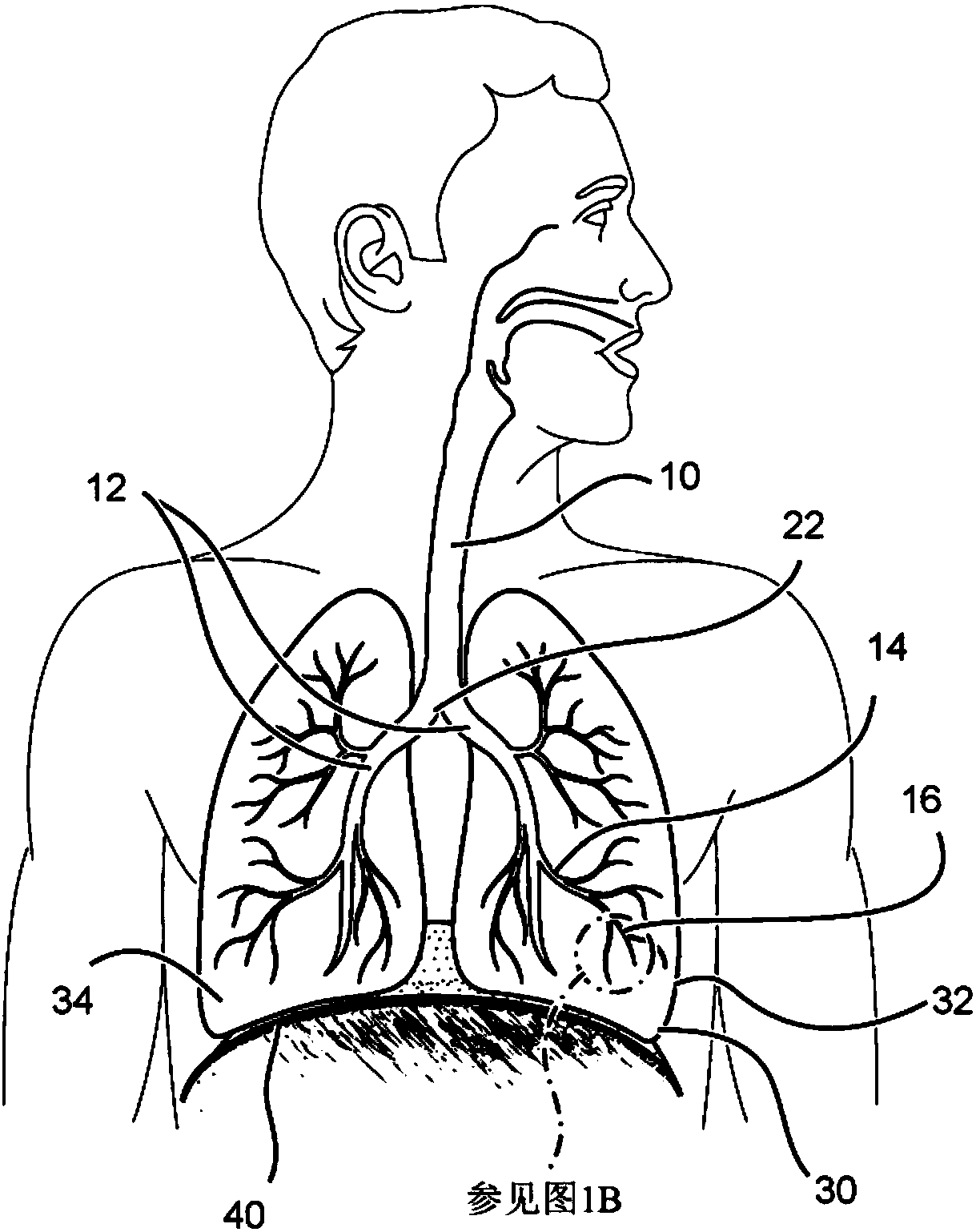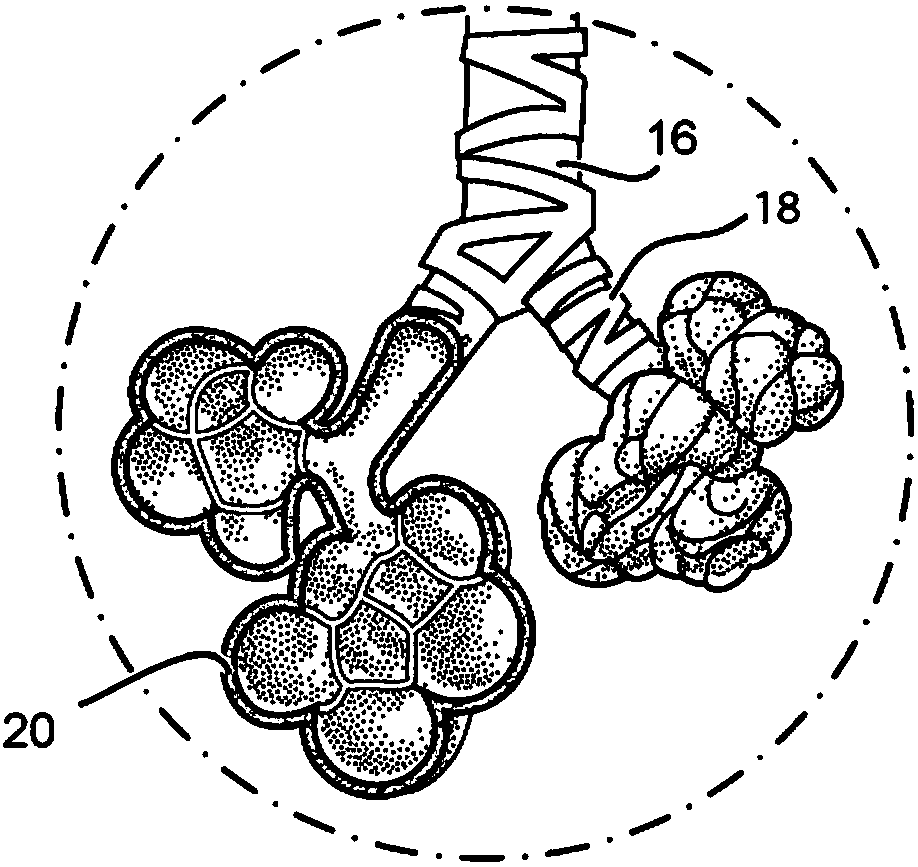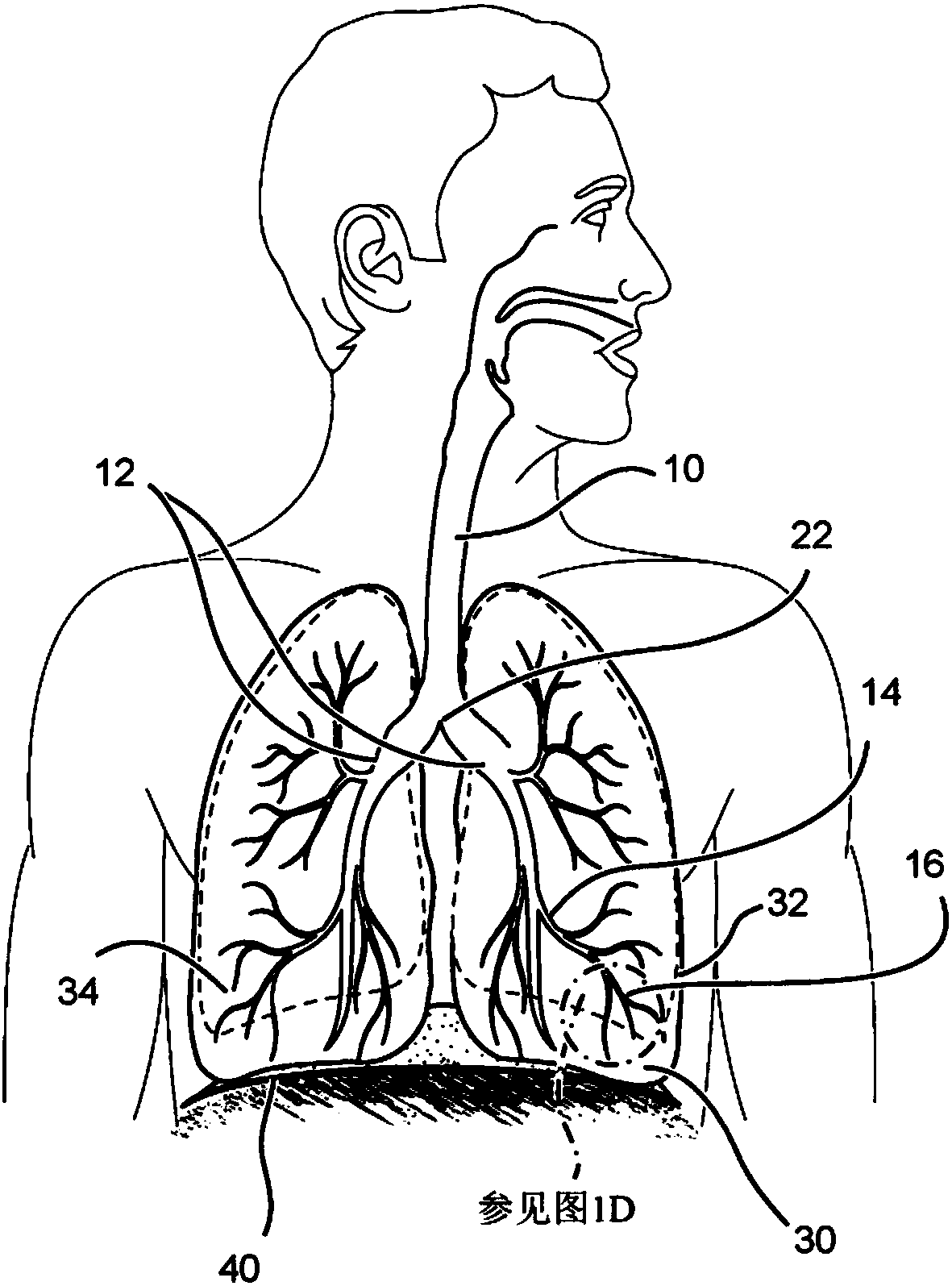Methods and devices for the treatment of pulmonary disorders
A technology for medical devices and loading devices, which can be applied to devices of human tubular structures, medical science, surgery, etc., and can solve problems such as unhealthy lung capacity.
- Summary
- Abstract
- Description
- Claims
- Application Information
AI Technical Summary
Problems solved by technology
Method used
Image
Examples
Embodiment Construction
[0079] Figure 1A , 1B , 1C, and 1D illustrate the respiratory system located primarily in the thoracic cavity. In humans, the lungs 30 exist in pairs and are located in the pleural cavity of the thorax on either side of the heart. The pectoral diaphragm 40, which separates the lungs from the abdominal cavity, expands and contracts to facilitate breathing. The lungs 30 of a typical adult are about 25 cm to 30 cm long and generally conical in shape. A protective membrane called the pulmonary or visceral pleura protects the lungs and a thin layer of pleural fluid separates each lung from the parietal pleura that covers the chest wall. The mediastinum separates the lungs and houses the heart, trachea, esophagus, and blood vessels. The lungs usually have distinct organizational divisions called lobes. The right lung 34 is divided by oblique transverse fissures (folds of the visceral pleura) into three lobes, called the upper, middle, and lower lobes. The slightly smaller left...
PUM
 Login to View More
Login to View More Abstract
Description
Claims
Application Information
 Login to View More
Login to View More - R&D
- Intellectual Property
- Life Sciences
- Materials
- Tech Scout
- Unparalleled Data Quality
- Higher Quality Content
- 60% Fewer Hallucinations
Browse by: Latest US Patents, China's latest patents, Technical Efficacy Thesaurus, Application Domain, Technology Topic, Popular Technical Reports.
© 2025 PatSnap. All rights reserved.Legal|Privacy policy|Modern Slavery Act Transparency Statement|Sitemap|About US| Contact US: help@patsnap.com



